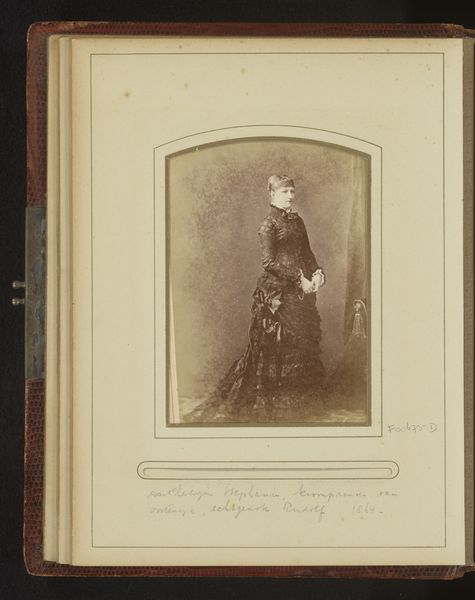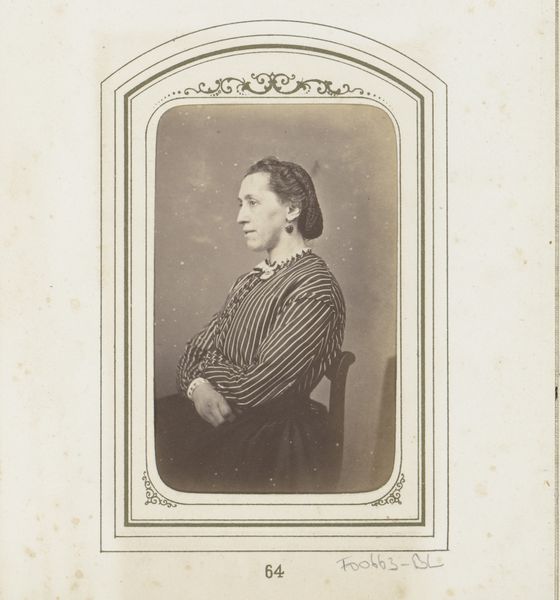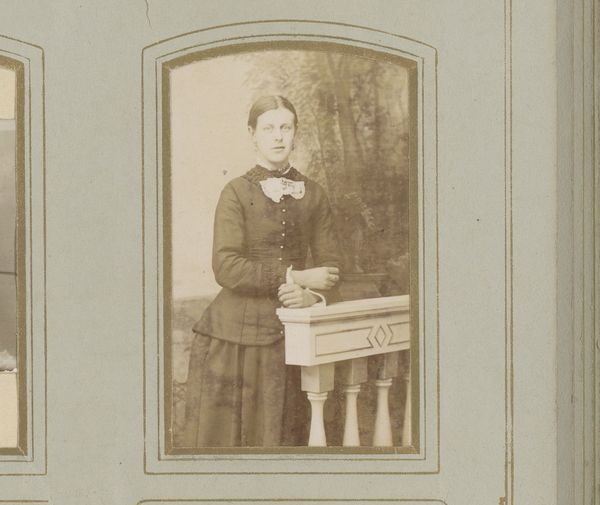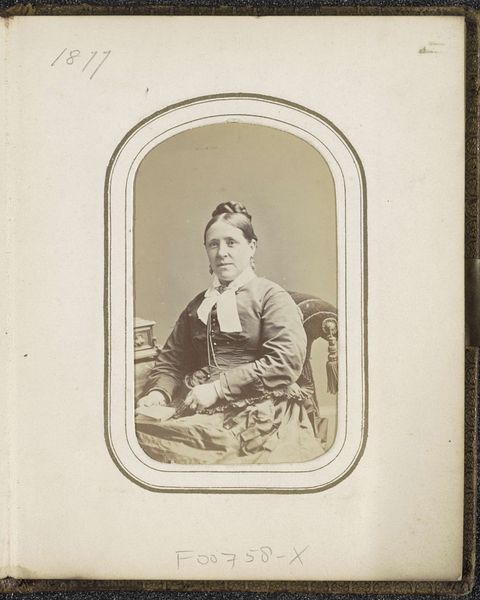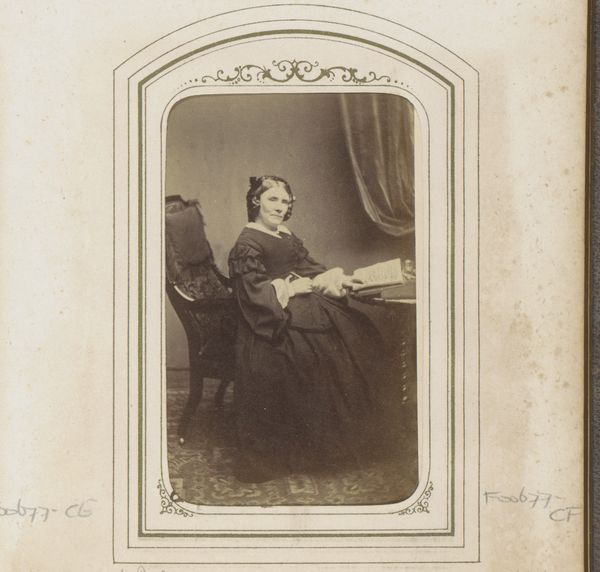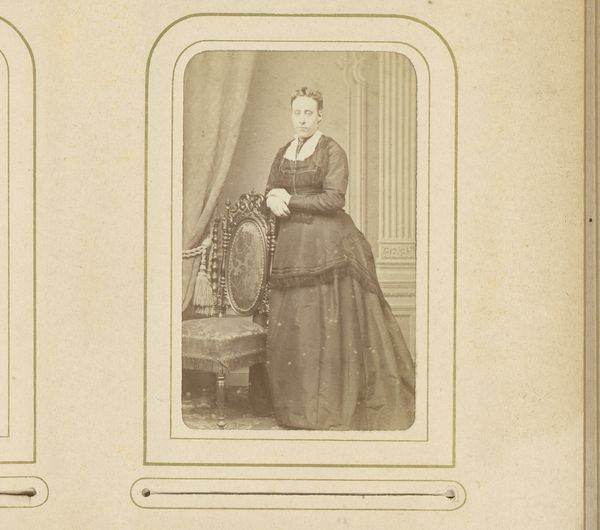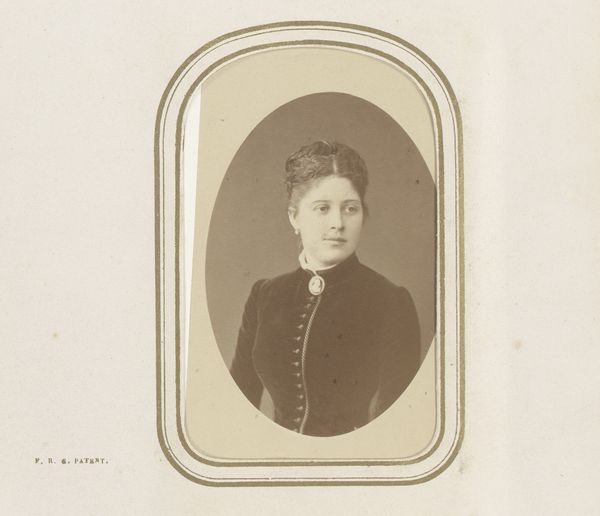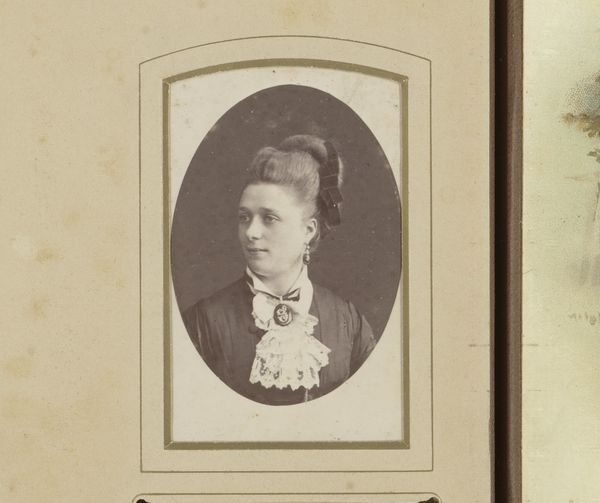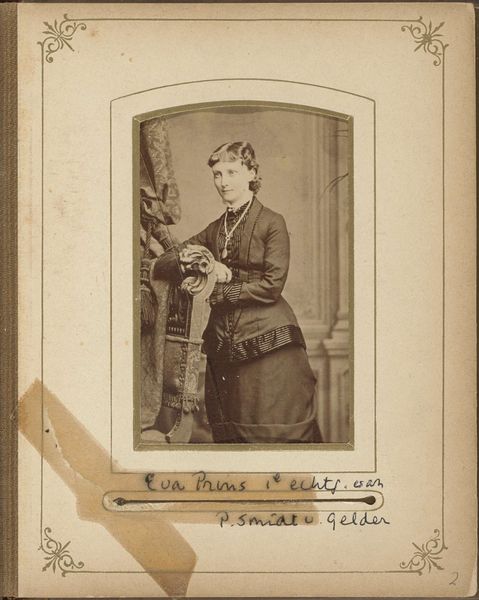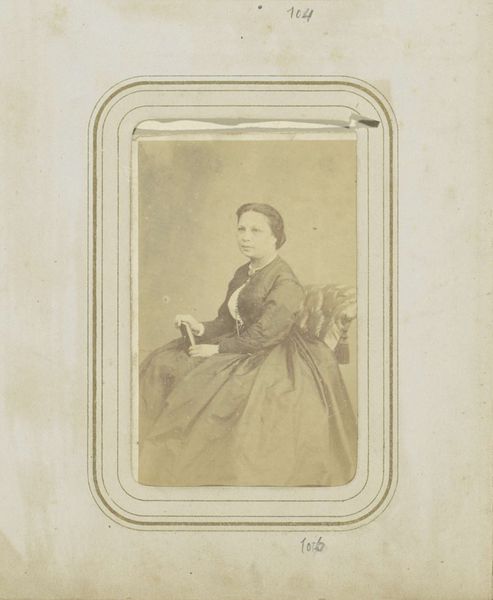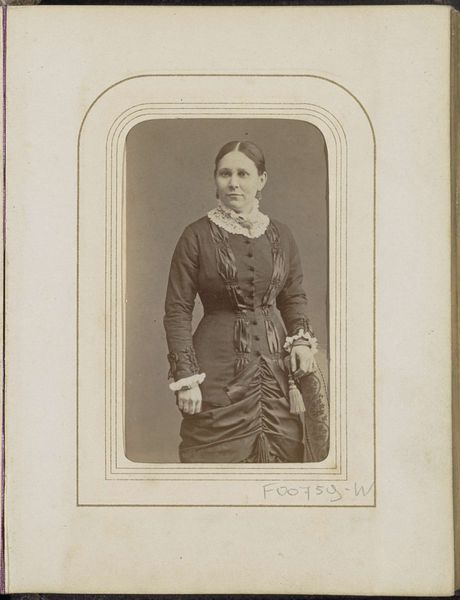
photography, albumen-print
#
portrait
#
16_19th-century
#
photography
#
historical photography
#
19th century
#
watercolor
#
albumen-print
#
realism
Dimensions: height 80 mm, width 45 mm
Copyright: Rijks Museum: Open Domain
Editor: We’re looking at a photograph entitled "Portret van Catharina Elisabeth Specht Grijp-Beucker Andreae," made sometime between 1854 and 1885. It’s an albumen print, a style of historical photography. What immediately strikes me is the subject's stoic pose; how would you approach interpreting this work? Curator: Formally, I find the composition quite striking. Note the stark contrast between the dark dress and the bright white collar, an emphasis created using albumen printing technology. What impact does the geometry of the photograph—the verticality and implied horizontals—have on the presentation of the subject? Editor: It almost feels like it adds to that sense of her being posed, frozen in place, maybe even a bit oppressed by those lines and angles. Curator: Precisely! And observe the subject's hand resting on what appears to be a sculpted object – possibly a fountain. Her proximity creates a visual counterpoint, introducing the interplay of the real and the fabricated. What does this tension between the real woman and artifice surrounding her imply to you? Editor: Maybe something about the artificiality of portraiture itself, even in relatively new photographic techniques at this time? That is a cool way to think about this; thanks! Curator: Indeed. Analyzing these relationships, forms, and tonal shifts opens a dialogue about representation and the essence of capturing a moment. And the geometric structure certainly invites contemplation on societal roles in rendering this woman with sharp features against this formal architectural background. Editor: I see, and thinking of the lines and textures – it shifts my focus to what photography, especially then, sought to capture in the physical form.
Comments
No comments
Be the first to comment and join the conversation on the ultimate creative platform.
